The ultimate guide to community growth
Learn the foundational elements of community growth, how it can benefit your business, best practices and metrics for getting started, and how an intelligent community growth platform can help.
Overview
Community has proven to be one of the defining elements of the 21st-century digital experience. Through social media, forums, messaging apps, online events, and more, people want to connect with each other to share information to develop their passions and interests or evaluate products. Research shows that more than three-quarters of global internet users participate in an online community.
In a time when digital citizens crave openness and authenticity in all of their interactions, community presents a win-win situation for businesses and buyers alike. Community members get to learn and grow on their terms while community organizers gain greater insight into their members’ wants and needs. When effort is put toward community growth, the value goes up for everyone involved.
For businesses, key reasons why community growth is important include a deeper understanding of your audience, member-driven knowledge sharing and support, trustworthy feedback for developing a stronger product, and amplification of marketing and sales efforts.
To help you digest the underlying concepts of community growth and put them into effect for your organization, we’ve created this guide to help you answer questions such as:
- What is community growth and what are its benefits?
- What are the phases of community growth?
- What are the best practices for community growth?
- How should I measure community growth?
- What are the benefits of investing in an intelligent community growth platform?
- How do I evaluate community growth platforms?
If you're ready to jump right into the conversation on community growth, join us in the Uncommon Community Slack where 1,500+ community and DevRel professionals exchange learnings and best practices.
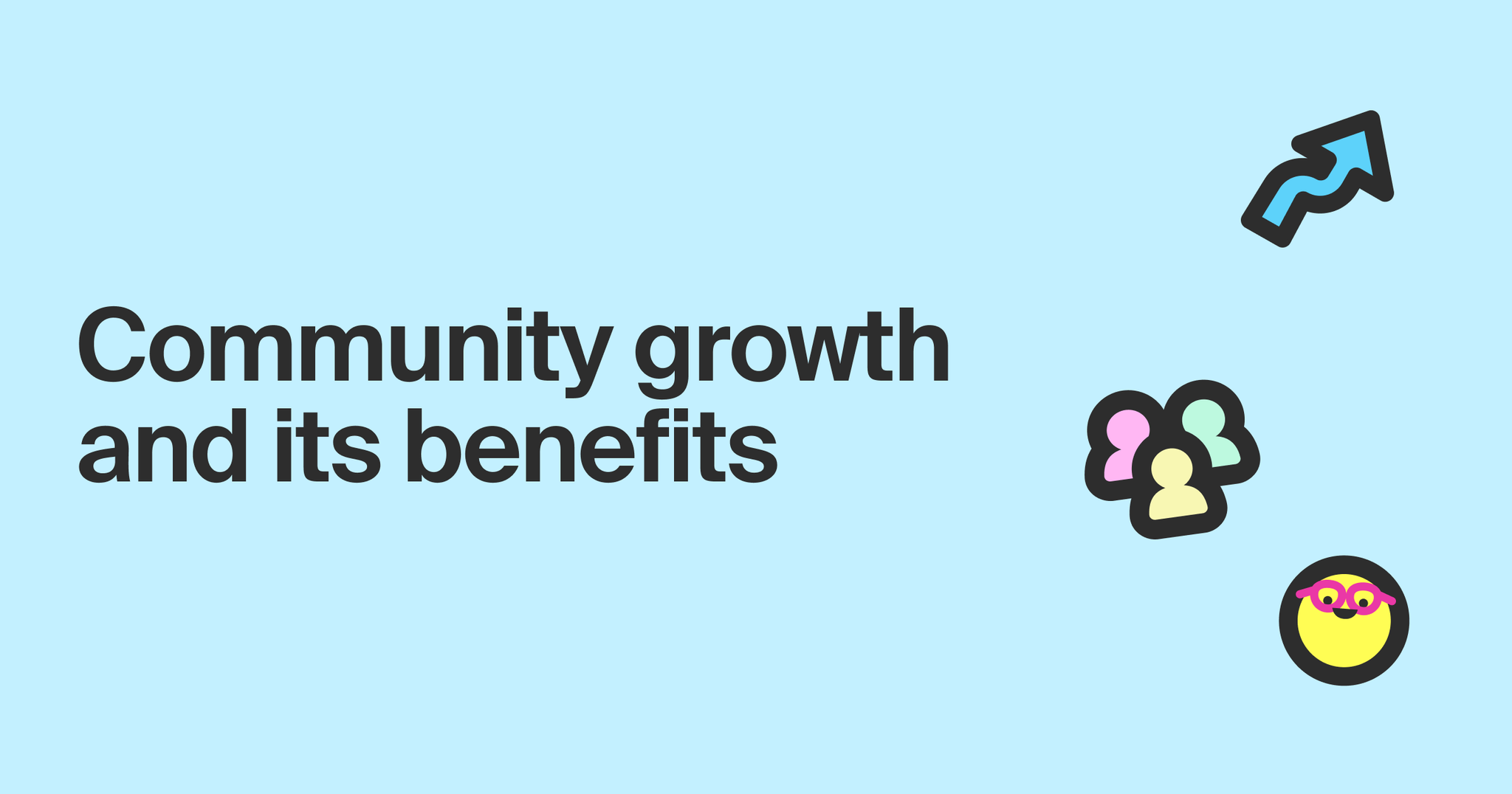
What is community growth and what are its benefits?
“Community growth” refers to all of the efforts an organization puts toward building, nurturing, and strengthening its community. Communities can take many different forms but are typically either communities of practice or product and comprised of users, customers, contributors, champions, and influencers. These members converse and collaborate wherever they prefer to hang out online, which can include a variety of channels like Slack, Twitter, LinkedIn, Discord, Reddit, and more.
When learning about current and future community growth strategies you will inevitably come across mentions of “community-led growth” and may wonder if these two terms mean the same thing. While they are closely related, each is a unique concept. Community growth fuels community-led growth, which occurs when a community is strategically activated for business results (e.g., boosting customer acquisition and retention, increasing product adoption, and driving revenue).
You are also likely to hear about how organizations are taking advantage of “intelligent community growth,” the practice of using AI and machine learning technology to strategically accelerate community growth to scale the work of community managers and DevRel pros. Some of the key benefits of intelligent community growth include:
- A unified view of each of your community members across all channels, including aggregated profile information and activity from all community tools (Slack, GitHub, LinkedIn, Twitter, etc.) as well as product usage and customer data.
- Intelligently-identified insights and trends from across your community, including topics, activity, and sentiment.
- The ability to take meaningful action on these insights, like automating welcome messages for new members or being proactively alerted to negative sentiment related to a specific product line.
- Reporting that shows community health metrics as well as the impact of community on the business.
Read this article to learn more about community growth and how it can be enhanced with an intelligence layer to collect, analyze, and act on community data.
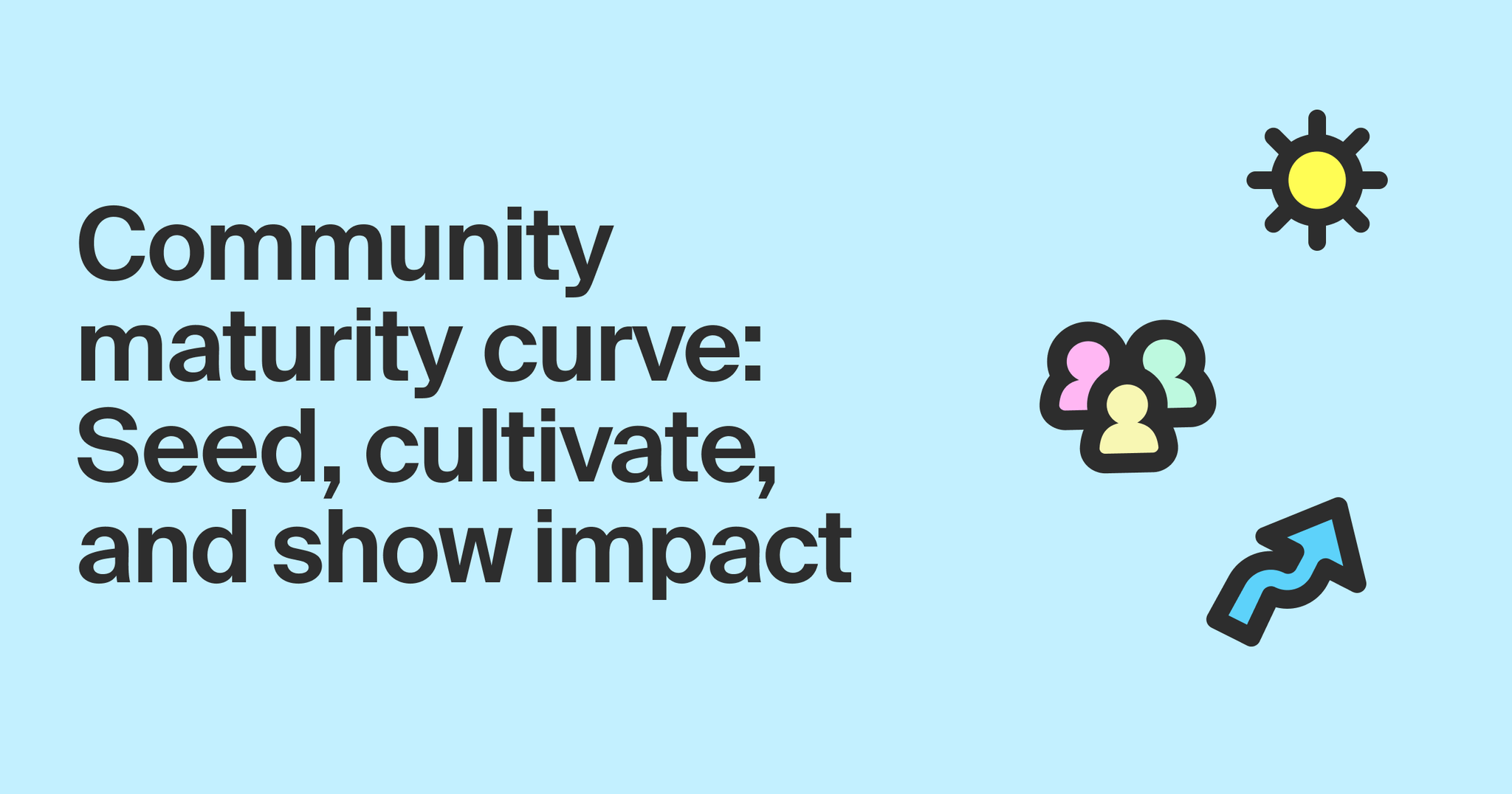
What are the phases of community growth?
To develop an effective community growth strategy, knowing where you fall on the community maturity curve is helpful. Perhaps you’re just getting started picking a channel to focus on and recruiting members, or maybe you’re already hosting spaces across a few channels and trying to report on business impact. Let’s take a look at the three core stages of community growth and what defines each.
Phase 1: Seeding the community
This first stage is for companies that are just embarking on their community growth journey. Remember, every business has a community whether or not they are aware of it or investing in it. If this is where you are now, take comfort in the fact that you aren’t literally starting from square one. Your ideal community members are out there, you just have to find them.
The focal point of the seed phase is selecting one or two channels to create a space where members can connect while the community team provides support, facilitates engagement, and weaves in organic conversations about the product and its benefits. A communication app like Slack and/or a social media platform like LinkedIn are popular choices for B2B companies because it’s likely your target audience already uses these channels on a regular basis.
Other foundational activities that should be part of the seed phase include setting guidelines and establishing a code of conduct. Since your community will likely be made up of people with different backgrounds, experiences, and perspectives, it’s important to set clear standards and expectations around participation.
Phase 2: Cultivating growth
In the growth cultivation phase, also known as the scaling phase, the focus lies on increasing membership while keeping the community engaged. It typically entails expanding your community tech stack to a few additional channels such as a forum, knowledge base, learning management system, or customer engagement platform.
To maximize growth during this pivotal phase, it’s important to identify and amplify key voices in the community such as frequent contributors, champions, and advocates. That’s exactly what Asana did when they adopted an intelligent community growth platform to help build out an ambassador program and measure its impact on both community health metrics and business impact metrics.
Continuing to gather data during the growth phase allows the community team to analyze the reach and effectiveness of the community. For example, determining if peer-to-peer knowledge sharing correlates to increased bandwidth for internal support resources.
Phase 3: Demonstrating community impact
Once your community program has proven successful at facilitating growth and sustained engagement, you will be ready to focus on measuring the positive impact it has on the business such as increasing product adoption and influencing revenue. This phase focuses on answering questions such as:
- Does community engagement help deals close faster?
- Does our product get stickier within an organization as members spend more time in the community?
- What is the impact of community activity and engagement on the overall customer journey?
- How is community contributing to top business goals like retention and revenue?
Intelligent community growth platforms such as Common Room are driving innovation at the forefront of this phase, helping businesses answer these questions and making end-to-end community attribution a reality. For example, one organization found that engagement in their community significantly accelerated the sales cycles with 72% of deals that began in community closing within 90 days. For sales and marketing-led deals, only 42% of those deals closed within the same time frame.
For more details on the community maturity curve, head over here for a deep dive on the core phases of community growth.

What are the best practices for community growth?
No matter what phase you’re in, you can benefit from tried-and-true best practices for community growth. Using these tactics will help your community mature from stage to stage and achieve the growth and business goals you desire.
If you’re seeding your community, take these foundational steps:
- Understand who you’re building for and select the initial purpose, communication channel, and topic areas for your community.
- Set expectations and community standards at onboarding, including establishing a process for approving new members, creating a community code of conduct, and clear engagement guidelines.
As you move into the cultivating growth phase, you’ll want to focus on these next set of tactics:
- Continue to encourage engagement through discussion-worthy content and events aligned to the trending topics in your community as well as using automated workflows like welcome and check-in messages.
- Facilitate member-to-member interactions by initiating champion programs that recognize and encourage your biggest contributors to keep engaging.
In the most mature stage, demonstrating community impact, you’ll track and analyze the outcomes of your efforts.
- Throughout your community maturity journey, you should be setting and measuring metrics, but in this phase, you’ll go beyond community health metrics to analytics that show the impact the community is having on your business.
- Consider tooling that can up your metrics game like a community growth platform that speeds and superpowers your reporting with intelligent analytics across all your community channels.
Using these tactics will help you define and achieve your community growth goals more quickly. Dive deeper into best practices for growing your community in this article.

How should I measure community growth?
Selecting KPIs and setting measurable goals enables you to track, report on, and achieve more efficient community growth. Here are a few of the core categories of metrics to keep in mind as you progress along the community maturity curve.
Membership metrics
Membership metrics measure how quickly your community is growing and can be referenced against your desired growth trajectory. These can include:
- Total number of members, which can be further segmented (e.g., member count by channel)
- Community growth rate, or how fast the community is growing MoM, QoQ, YoY
- Member type, like influencer, contributor, pioneer, champion, etc.
Engagement metrics
Engagement metrics measure how frequently members interact with each other and participate in community conversations, events, and programs. These can include:
- Total volume of activities, including posts, replies, event attendance, and more
- Percentage of active members, or those members who actively participate in the community by answering questions, sharing content, and engaging with others
- Summary of positive vs. negative sentiment across all community activity in a given time period
- Top trending discussion topics such as feature requests, bugs, and product appreciation
Business impact metrics
Business impact metrics tie community growth to company goals and bottom-line growth. These can include:
- Customer acquisition cost (CAC), lifetime value (LTV), and other pipeline metrics that are influenced by community growth and community-led growth
- Customer retention rate, which is an indicator of customer satisfaction and their perceived value of a product
- Case deflection, or a measurement of how often customers find their own answers to problems they would have otherwise contacted your support team about
- Community-attributed revenue, or revenue from organizations that appeared in the community before becoming an opportunity in the CRM (e.g., Salesforce or HubSpot)
Check out this article for additional information on using metrics to understand community growth and business impact.

What are the benefits of investing in an intelligent community growth platform?
An intelligent community growth platform (sometimes called an intelligent community-led growth platform) supercharges your growth efforts with AI, natural language processing (NLP), and automation, allowing you and your team to do more with your community. Integrating these technologies into your community-building efforts creates efficiencies and surfaces valuable insights which can then be used to fuel community-led growth efforts.
Still looking for more evidence as to why a community growth platform is a worthwhile investment? When thinking about ROI, consider the fact that a community growth platform enables you to:
- See all of the members, activities, and organizations in your community in one place with integrations that bring community, product, and customer data into a single view.
- Understand and stay on top of the most important happenings in your community with intelligently-detected trending topics and custom alerting on need-to-know activities.
- Scale community management and DevRel through automations and workflows so your team can spend more time building relationships.
- Make smarter community investments by understanding which content, events, and other programming is making the most impact.
- Help the GTM team identify new leads and improve outbound prioritization by gaining a deeper understanding of your members’ priorities, pain points, and sales-readiness.
- Accelerate your pipeline through a community-first approach to growth: community-led deals often close faster than deals led solely by marketing and sales.
Take a look at this article to learn more about what you need to invest in a community growth platform, what you can expect to gain in return, and how to get started.
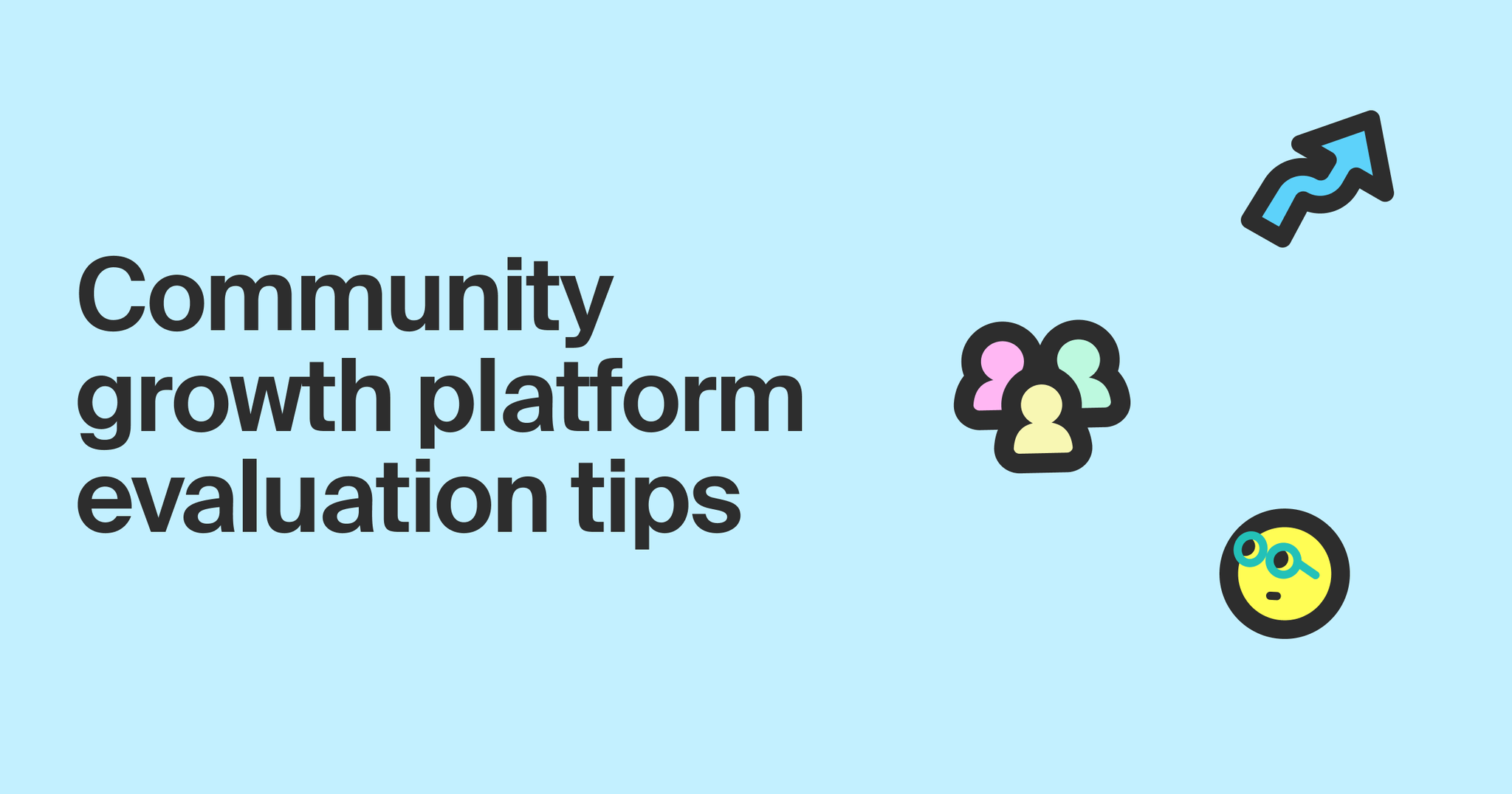
How do I evaluate community growth platforms?
Now that you understand the benefits of investing in an intelligent community growth platform, let’s examine some of the key steps and considerations you should use to evaluate and select a platform that’s right for you.
Some best practices for evaluating a community growth platform include:
- Understand the drivers of success for your community: Write down the actions, initiatives, and methods of engagement that have proven successful in your community growth journey thus far.
- Prioritize your must-have features: Identify the necessary features your community growth platform will need to have to help your teams achieve their objectives. Features can be grouped under a few different categories including:
- Community management: Measuring community growth, keeping up with new organizations, and creating member cohorts for easier management.
- Engagement and activation: Building automated engagement workflows, setting team alerts, and designing custom reports based on your goals.
- Community intelligence features: Automatic activity categorization, sentiment analysis, and enrichment of profiles with customer and product data.
- Security and compliance: Keeping community data secure through SOC 2 Type II certification, GDPR and CCPA compliance, and support for single sign-on, role-based access control, and SCIM provisioning.
- User support: Email and chat support, a user community, and custom data science analysis for advanced use cases.
- Ask the right questions: Go into a sales conversation or demo call with a list of predefined requirements or questions to find out if the community growth platform provides the value you’re looking for. These might include:
- Does the platform provide a unified view of all members, activities, and organizations across the community?
- Can the platform automate repetitive actions to free up more time for strategic programs and relationship building?
- Does the tool easily identify contributors, influencers, champions, and other impactful members?
- Will the platform help you understand how the community is feeling at a given point in time?
- Does the tool enrich community data with product and customer data to generate actionable insights that map to business outcomes?
- Will the platform allow you to measure community-attributed revenue and the impact of community investments?
- Demo the platform: Make sure you are able to get hands-on experience using the platform through a free trial or guided demo. This will help you get a sense of the user experience, interface, and unique workflows of each platform.
- Track your progress: If possible, sign up for a trial of each of the competing community growth platforms on your shortlist. Train your teams on the software, and see how well they acclimate to the new technology. Then, in regular increments, compare your team’s progress across each platform. Has one resulted in stronger insights or higher levels of engagement and growth than the other? Do your teams prefer one UI over the other?
Read this article for more tips on evaluating a community growth platform and choosing one that’s the right fit for your needs.
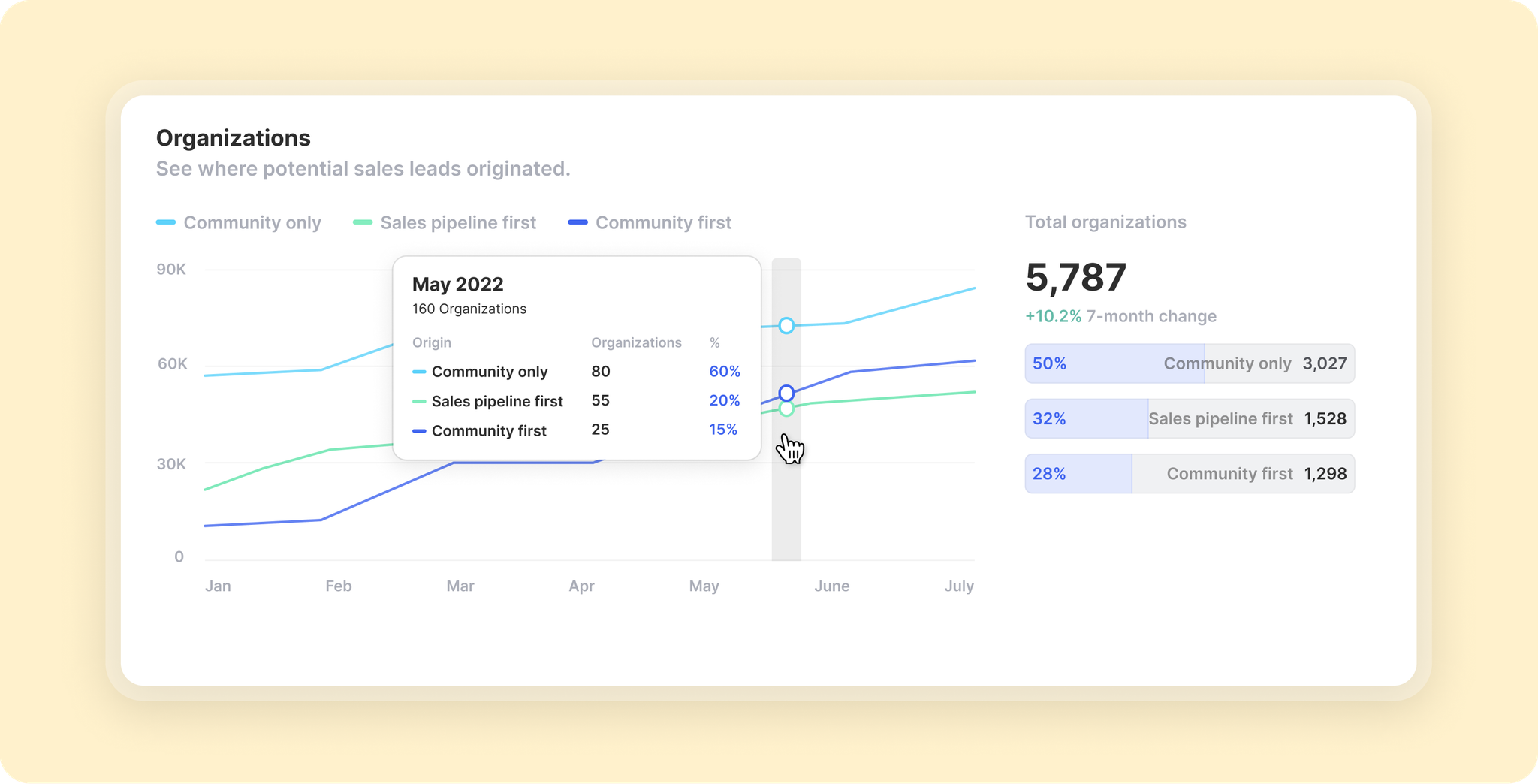
An intelligent approach to community growth
If you’re considering a tool for activating your user community, Common Room is the leading intelligent community growth platform.
Common Room brings together community engagement, product usage, and customer data into a single place, and uses AI and ML to surface insights that let you take action with context and accelerate the customer journey.
Ready to intelligently engage and grow your community? Try Common Room for free or request a demo.
We think you'd like these
Blog post
Go beyond ABM: Get up to 50% person-level visibility of US-based web traffic with enhanced website visitor identification
Apr 8th, 2025·8min readSee how Common Room's enhanced website visitor identification—powered by...Podcast
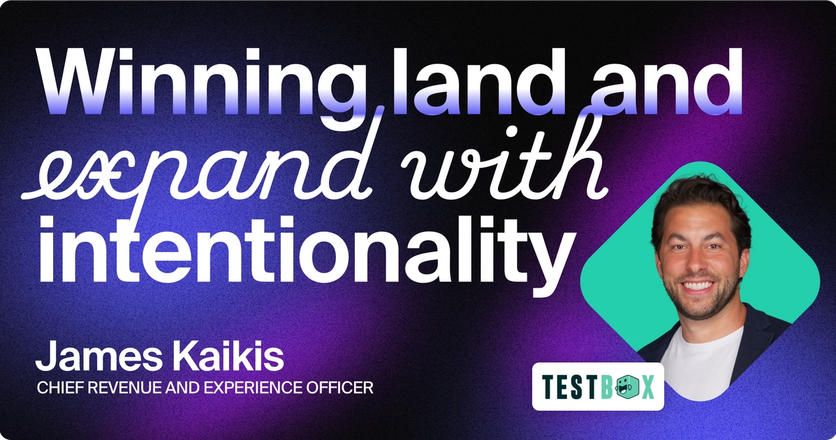 Mar 20th, 2025·5min readMaximize growth from your install base with James Kaikis, Chief Revenue and Experience Officer at TestBox.
Mar 20th, 2025·5min readMaximize growth from your install base with James Kaikis, Chief Revenue and Experience Officer at TestBox.Blog post
From insight to impact: Scale hyper-targeted personalization with Common Room's customer journey graph
Mar 18th, 2025·9min readSee how Common Room's customer journey graph helps you deliver hyper-targeted personalization at scale...